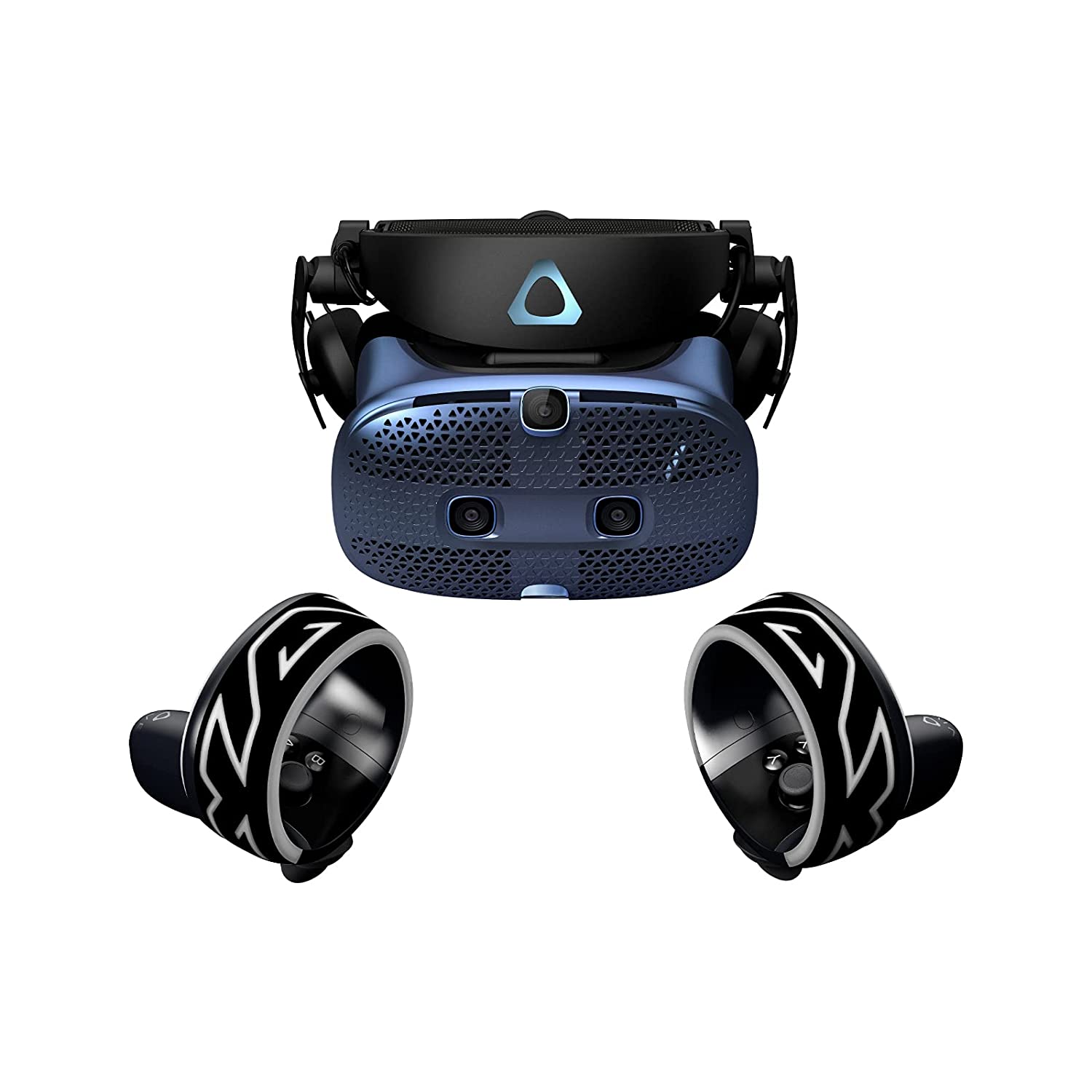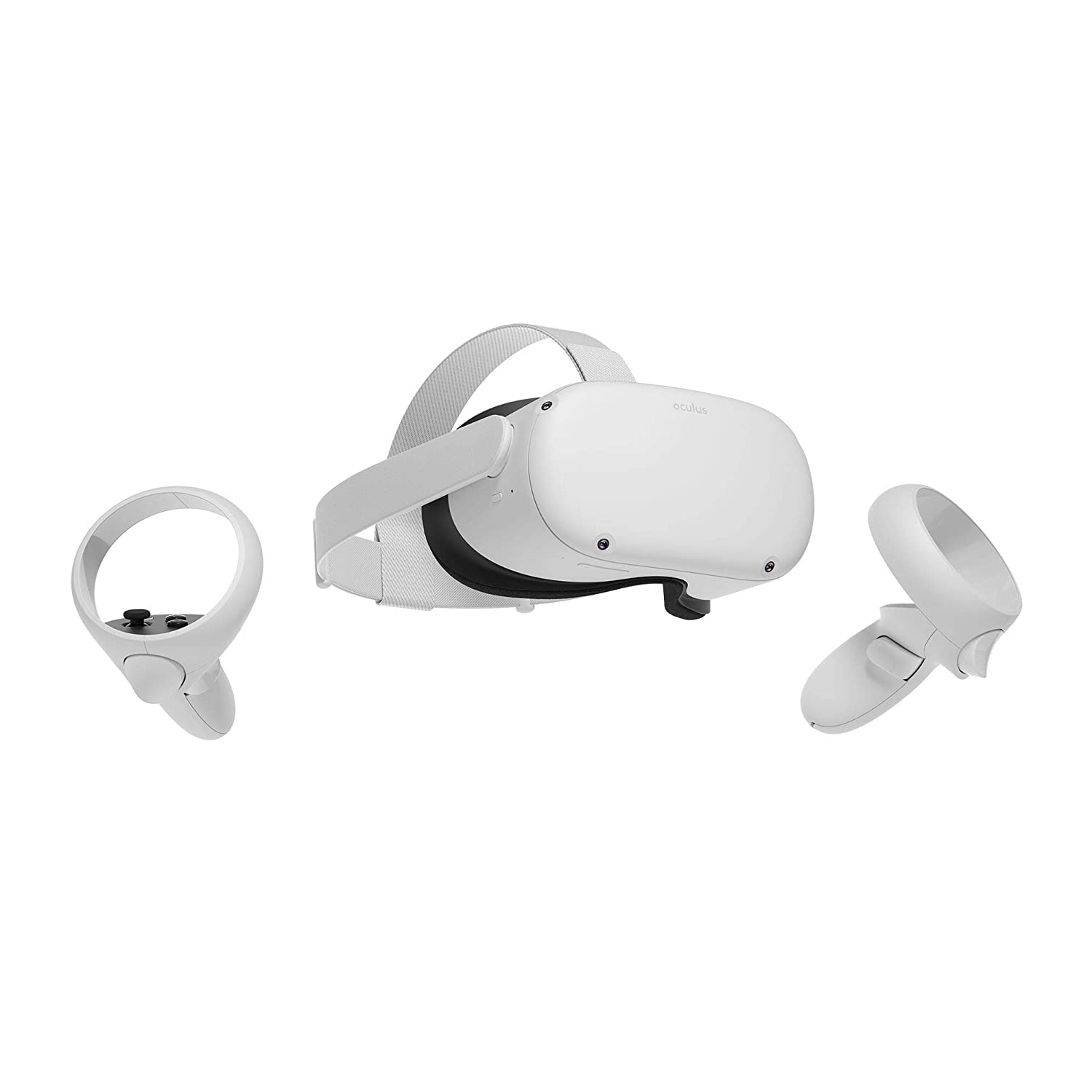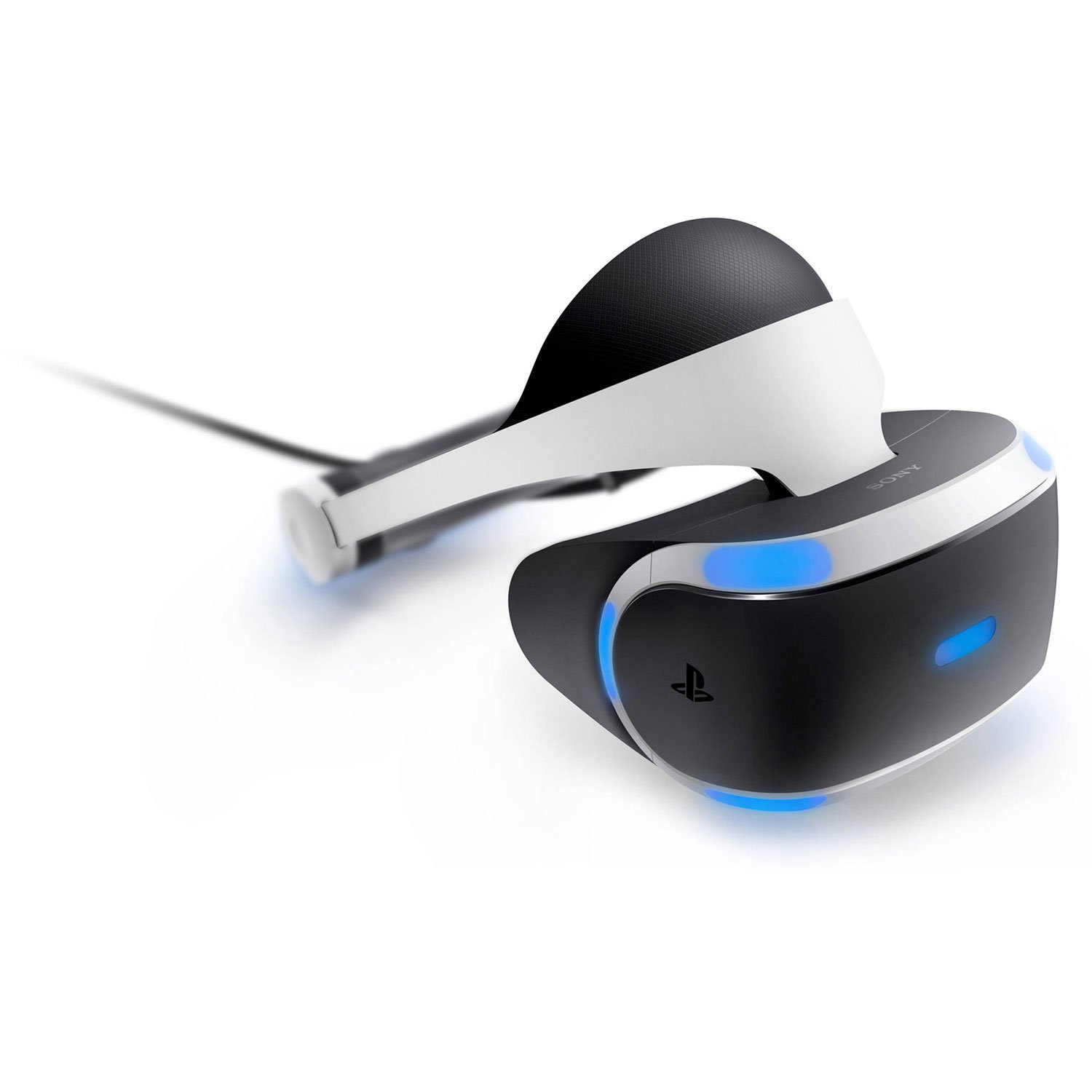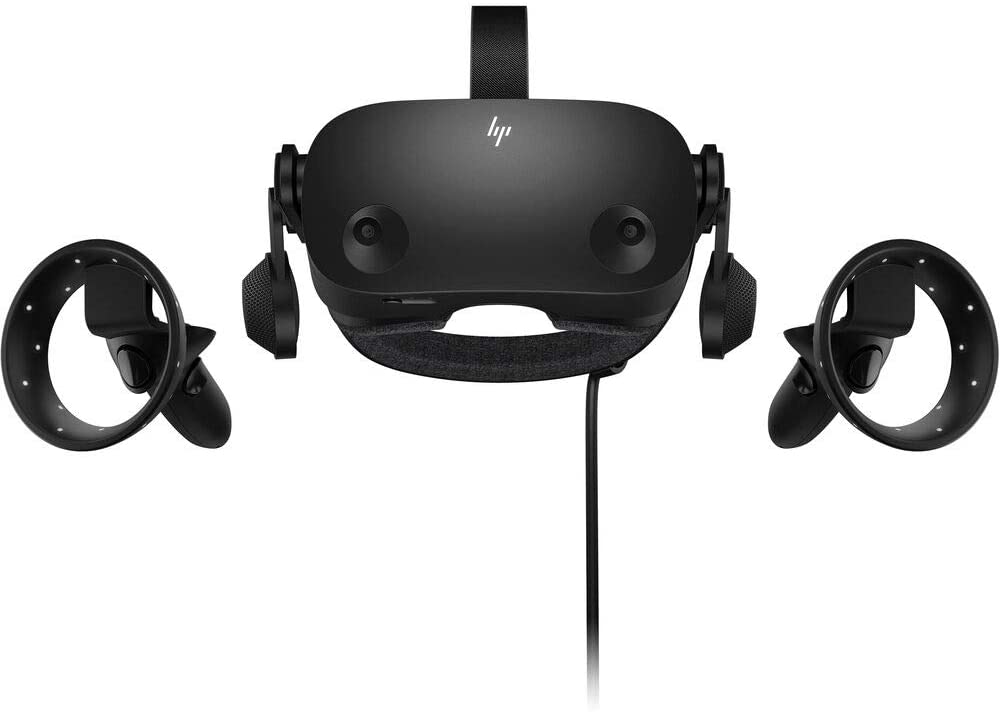The Best VR Headsets for Your Money
VR headsets offer the next step in digital entertainment, bringing the promise of a Star Trek-like virtual experience closer than ever before.
VR experiences today come in many flavors, from virtual tours of both real world and digitally created spaces, such as the very popular VR Chat application, to fully immersive video games that make you feel like you’re the protagonist of the story (like flying for the Rebels or the Empire in Star Wars: Squadrons).
Home virtual reality technology has come a long way in just under a decade. Early headsets were huge and clunky and cost several thousand dollars for what was essentially a dry run for today’s models.
VR headsets have become considerably more compact and affordable in recent years, but the main barrier to entry is still their high cost. Though standalone devices like the Oculus Quest 2 are slowly developing a presence, even the most affordable models are $400 for the headset alone, with required peripherals like room sensors and controllers costing upwards of an additional $120 each. This means that a complete set of VR hardware can easily wind up costing $1,000 or more.
Also, as a general rule, the more graphically advanced and interactive VR experiences rely exclusively on high-end PCs or game consoles to be able to run at all, though some mid-range PCs are compatible with the relatively simpler “tour style” games or applications. In other words, you'll probably be spending a lot of money on a PC and accessories to get your VR headsets to run smoothly.
VR Headset Guide for Safety and Health
VR headsets are essentially goggles equipped with TV screens. As with TV and computer gaming, taking breaks from your VR headset at least every 30 minutes is important for keeping your eyes in tip-top shape.
Another concern is motion sickness — that is, headaches, nausea and disorientation — which can affect an estimated 40% to 70% of VR users at least temporarily. Also called "cybersickness," these symptoms could stem from the discrepancy between what your eyes are seeing and what is actually occurring. This is another reason to take breaks, and to start out using the headset for short periods of time and gradually increase. Your brain needs time to adjust to this new experience.
Unlike most other digital experiences, VR also requires you to use parts of your body in ways you otherwise wouldn’t while watching TV or playing a video game. This means that you need to make sure there is ample space around you to at least swing your arms safely or walk around the room without bumping into or tripping over anything.
Smartphone VR
Phone-based VR became a popular alternative in the mid-2010s due to its relative accessibility when compared to PC VR (more people have smartphones than high-end PCs or gaming consoles). It makes sense, too, since phones are essentially tiny TV screens. All they need is a goggle-like accessory to turn them into VR screens. Many VR headset alternatives were — and still are — available, from cardboard kits like Google Cardboard to dedicated headsets from companies such as Samsung’s Gear VR.
However, as recently as 2019, articles stating that phone VR is dead started cropping up. While this is a bit of an exaggeration, it is true that companies like Google have started pulling the plug on their phone VR initiatives due to various reasons. Despite their accessibility, many smartphone screens simply aren’t designed with VR in mind, and using smartphones for VR can possibly cause more harm (increased eye strain and nausea, for example) than the entertainment value they provide.
If you have a VR-compatible phone, specially designed headsets may be worth looking into. It’s important to be aware of the downsides, though, as well as the fact that support is no longer being offered for many of these products.
Choosing the Ideal VR Headset: A Buyer's Guide
If, after much consideration, you’ve decided to take the plunge into the wonderful world of VR, congratulations, you’re in for a real treat!
However, it’s important to consider the following key points to make sure you get the most out of your headset:
• Screen resolution. As with any digital display, the screen resolution determines the sharpness of the images you see. VR headsets measure per-eye resolution, instead of overall screen resolution. For example, Sony’s PlayStation VR has a resolution of 960 x 1,080. This, on its own, is lower than most standard computer displays today, but when taken as a whole it becomes 1,920 x 1,080 — much more in line with what people expect from the average digital display these days.
• Screen refresh rate. Digital displays (even your TV) work by putting still images together in quick succession to give the appearance of moving pictures. This is accomplished by refreshing the screen quickly enough to avoid “stuttering,” which would break the illusion of motion. A TV screen can work just fine at a 60Hz screen refresh rate, but VR experiences need at least 90Hz to work properly. This isn’t only for convenience, but also for safety. Since the VR headset is effectively replacing your regular eyesight, image stuttering can cause disorientation and nausea, increasing the risk of injury.
• Physical space requirements. Most VR headsets rely on external sensors to track your movements across a room. Typically, this involves placing small “tower” devices in each corner of a room — you can add more sensors for better precision — to accurately translate real-world movement to in-game movement. Thankfully, some new models have multiple cameras embedded in the faceplate, which scan the room you're in and capture your movements, instead.
Regardless of whether your VR headset relies on external tower sensors or built-in camera sensors, you need ample space to experience VR safely. Arm swinging and walking are often integral parts of the VR experience, and even these minimal movements can be dangerous in a cluttered environment.
• Accessories. Even standalone headsets like the Oculus Quest 2 need controllers to function as intended. Depending on the model you choose, you may need to purchase additional accessories to make the most of your VR experience. This means considering how many sensors you might need, or whether you want to invest in wireless adapters to reduce the chances of tripping over cables (many VR headsets need to be wired to a PC or console to work).
Reviewing the Top VR Headsets of 2023
1. Best overall: Valve Index
List Price: $1,426.98
Check on Amazon | Check on GameStop
Platform: PC | Resolution (per-eye): 1,440 × 1,600 | Refresh rate: 120Hz (144Hz experimental mode) | Field of view: 130° | Tracking: 6DoF | Weight: 1.79 pounds
For the cutting edge in VR headsets and accessories, look no further than Valve’s Index. While there are competing models with higher resolutions, the Index still delivers smooth and crisp images on even the most graphically advanced games. It also sports a very generous 130° field of view, which allows you to view more of whichever virtual world you find yourself in.
What sets the Index apart from other headsets is its 120Hz screen refresh rate, which is much higher than the standard and practically eliminates visual stuttering (a main offender when it comes to VR-induced nausea). If you own a PC with the latest and greatest internal components, there is an experimental 144Hz mode for an even smoother experience.
The Index’s controllers are unique in that they feature finger tracking, which makes use of all ten fingers for a more immersive experience (though the feature is currently only available in Valve’s Half-Life: Alyx title). Per Valve’s design philosophy, the Index is compatible with other VR hardware and software, allowing you to mix and match headsets, controllers and tracking stations from other manufacturers (particularly HTC).
Pros
- Top-notch hardware for the latest gaming computers
- Amazing tracking quality
- Almost no visual stuttering
- Excellent field of view
Cons
- Expensive ($1,000+) and hard to set up
- Some glare when using the headset
2. Editor's pick: HTC Vive Cosmos
List Price: $800.00
Platform: PC | Resolution (per-eye): 1,440 x 1,700 | Refresh rate: 90Hz | Field of view: 110° | Tracking: 6DoF
The Vive Cosmos is a flexible VR headset with a screen resolution that rivals the Index. The base model has six cameras on its faceplate that track your movement without the need for external sensors. If you prefer a more precise full-room VR experience, an alternate faceplate that’s compatible with HTC’s Vive Trackers can be purchased for $130.
The Cosmos comes with its own library of over 700 VR titles, but is also compatible with Steam VR for added variety. Though it needs to be hooked up to a PC by default, a wireless adapter is available for an additional $350, which provides a seamless VR experience without the hassle (and tripping hazard) of cables all over the room.
Pros
- Wireless-capable PC VR headset
- Expansive movement coverage
- Impressive game library
- Intuitive user interface for ease of use
Cons
- Wireless features need an adapter sold separately
- Only operates with a PC
3. Best for low prices: Oculus Quest 2
List Price: $394.85
Check on Amazon | Check on Walmart
Platform: Standalone, PC | Resolution (per-eye): 1,832 x 1,920 | Refresh rate: 90Hz | Field of view: 100° | Tracking: 6DoF | Weight: 1.1 pounds
VR headsets normally require you to connect to a PC (or console) if you want to play games, but the Oculus Quest 2 is a fully standalone model with an integrated games library. The Quest 2’s games are optimized for its internal hardware specs, which allow you to play right out of the box, though at a lower graphical resolution than you would normally get from running said games from a dedicated PC.
If you prefer to play higher-end games from third-party platforms such as Steam VR, the Quest 2 can connect to a PC and make full use of its impressive resolution, which is higher than Valve’s Index headset. Its 90Hz screen refresh rate is the bare minimum required for VR titles, guaranteeing minimal image stuttering and reducing the likelihood of VR-induced nausea.
With a base price of $300 (depending on demand and availability), it is the most affordable full-feature VR headset available at the moment. The main drawback, if you consider it as such, is that it requires an existing Facebook account to use. That might not sit well with anyone who has concerns with the company’s privacy practices, or simply wishes to avoid a social media presence.
Pros
- Relatively affordable compared to alternatives (under $500)
- Excellent sound clarity without outside interference
- Ideal for fitness games
- Quality hardware specs
Cons
- Requires a Facebook login to use
- Setup may be difficult
4. Best for console gaming: Sony PlayStation VR
List Price: $113.25
Check on Amazon | Check on GameStop
Platform: PS4, PS4 Slim, PS4 Pro | Resolution (per-eye): 960 x 1,080 | Refresh rate: 120Hz | Field of view: 100° | Tracking: 6DoF | Weight: 1.34 pounds
While PC gamers are spoiled for choice when it comes to VR options, console gamers can only rely on the PlayStation.
At roughly $400 for the full kit, the Sony PlayStation VR is especially appealing for anyone with a tight budget. For the sake of comparison, a VR-capable PC can cost well over $1000, plus a dedicated VR headset can cost as much or more than PlayStation’s own headset.
A 100° field of view fits a reasonable amount of visual imagery, while its 120Hz screen refresh rate keeps image stuttering to a minimum. Because gaming consoles are less powerful than high-end gaming PCs when it comes to graphics, the resolution is much lower than competing models. So you can expect some amount of pixelation and rough edges on games with realistic graphics such as Resident Evil 8.
Pros
- Includes a large library of VR-compatible games
- Fits comfortably for high-activity gameplay
- Doesn't require expertise to have fun
- Minimizes motion sickness risk
Cons
- Only works with PlayStation 4 and 5
- Graphics aren't as high quality
5. Best image resolution: HP Reverb G2 Virtual Reality Headset
List Price: $599.00
Check on Amazon | Check on Walmart
Platform: PC | Resolution (per-eye): 2,160 x 2,160 | Refresh rate: 90Hz | Field of view: 114° | Tracking: 6DoF | Weight: 1.1 pounds
The HP Reverb G2 boasts the highest resolution for under $1,000 at the moment. Though the Reverb G2 only supports a maximum screen refresh rate of 90Hz, the current generation of gaming PCs can barely support faster speeds at this level of resolution (unless you’ve invested in the best internal components available). Its 114° field of view is also a little higher than most competitors, which is nice for taking in more of the virtual scenery at once.
Since the Reverb G2 uses internal tracking sensors (as opposed to full-room tracking towers), you won’t have to shell out any extra cash to have a fully functional VR headset. While the G2’s resolution is outstanding, its controller tracking is not very precise. This makes this headset ideal for more passive VR experiences (think a rollercoaster versus an interactive haunted house) that don’t require delicate hand movements to progress.
Pros
- Best screen resolution available for under $1,000
- Lightweight and comfortable to wear
- Excellent speakers for great sound quality
- Light doesn't bleed through the eye covering
Cons
- Controller tracking could be better
- Some computer savviness is required for setup
Why Trust Us
Our commitment to the consumer begins with product selection and ends with the last word we write in each article. Each VR headset is carefully vetted quantitatively through star ratings and the number of reviews qualitatively through careful examination of reviews and the features each one has to offer. Leveraging our team of bargain hunters, we’re also always sure to keep your budget in mind while we find the best VR headsets on the market. Our team of experts is dedicated to accurately depicting the pros and cons of each VR headset, translating technical product specifications into information you can understand. Our goal is to help you get the best gaming experience that money can buy.
More From Money:
The Best Gaming Laptops for Your Money





